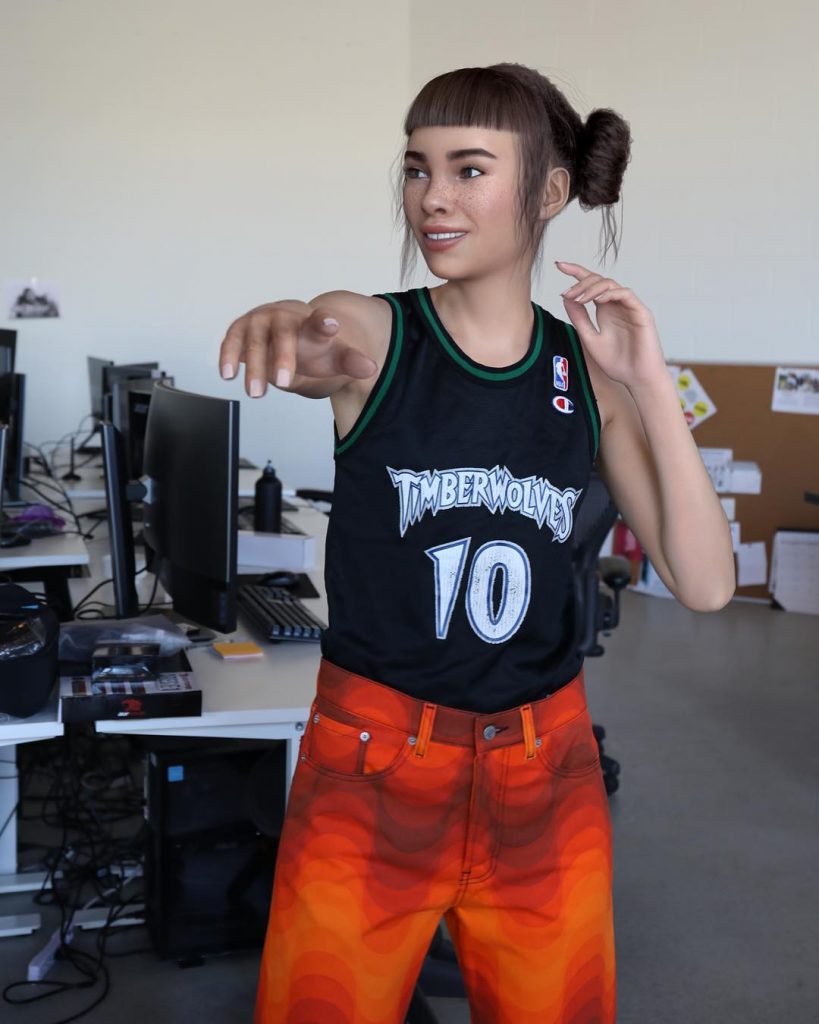
Lil Miquela. Image source: Instagram
Many brands work with influencers. Some also work with micro-influencers, child influencers, animal influencers and nano-influencers.
Virtual influencers, computer-generated images (CGIs) with enormous social followings, may be the next major trend in social media.
Virtual celebrity Lil Miquela, who boasts 1.5 million Instagram followers, is the leading example of the coming wave of computer-generated influencers. The 19-year model acts like a typical Instagram influencer. Her account shows her skateboarding with friends, visiting New York for fashion shoots and attending music festivals. Since launching her account, in 2016, she partnered with fashion bands Prada, Diesel and Moncler.
Real Money for Virtual People
Burd, the company behind Miquela and other virtual characters, won real money from Silicon Valley investors, around $6 million, according to TechCrunch.
She is remarkably realistic. Many of Miquela’s followers thought she was a real person, although some had suspicions. Brud finally unveiled the truth last year in a PR stunt that involved conflict with another animated character, reminiscent of a TV Reality show.
But CGIs are not a sideshow. New venture-backed companies are developing virtual characters to launch on social media channels like Snap and Instagram or other platforms, TechCrunch reports. Entrepreneurs exude confidence that people will love to see more virtual influencers.
Some experts predict CGI influencers will become a $2 billion industry by 2020, according to CBS News. The artificial people will rival or even surpass the likes of Kim Kardashian in followers and income from endorsements. Technological advances will enable brands to bring the CGI creation business in-house.
Make Your Brand’s Own Influencer
“In the future, companies will be able to design their own influencers who personify their brands. However, it will only work if the CGI influencer has an authentic connection to the brand and is closely aligned with its supporters,” writes virtual reality expert Cathy Hackl for the PRSA.
While many people, especially those involved in financing and creating virtual influencers, praise CGIs, others have deep concerns about transparency. Concerned that consumers will purchase products based on actions of characters who they think are human, they urge the FCC or legislators to issue guidelines for CGIs
“We are blurring the lines between fiction and reality,” attorney David Polgar, who studies the ethics of technology, told CBS News. “The impetus is on the legislative branch to say, ‘Maybe we need better transparency.'”
Unique Challenges of Virtual Influencers
Virtual influencers and the people who create them bring their own set of legal and PR issues, warns Garry Grant, an SEO and digital marketing industry expert. Brands that switch from real to computer-made characters could place themselves at risk.
Brands need to grapple with questions such as: Who owns the intellectual property? Whether the character was created in-house or by an outside firm will impact intellectual property issues.
Will the creator remain anonymous? Contracts should cover the question. As of yet, no one knows who created Miquela. Contracts should also include clauses that cover other issues related to reputation, appropriation and authenticity.
Will virtual influencers meet disclosure rules? Brands should understand disclosures required under current FTC guidance to better prepare for new regulations. Although the FTC has not yet issued rules specifically for CGIs, existing rules on endorsements apply to CGIs and their sponsors.
Bottom Line: Computer-generated characters are expected to swamp social media and become leading social media influencers, with millions of followers and millions of dollars in endorsement deals. But virtual influencers raise ethical issues and unique concerns for brands.
William J. Comcowich founded and served as CEO of CyberAlert LLC, the predecessor of Glean.info. He is currently serving as Interim CEO and member of the Board of Directors. Glean.info provides customized media monitoring, media measurement and analytics solutions across all types of traditional and social media.




